Jewelry Soldering Machine
China Leading Soldering Machine Transformed for Jewelry Design Welding
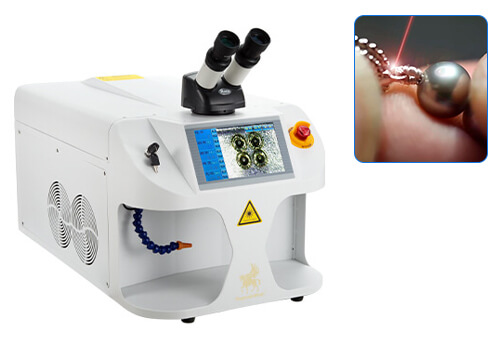
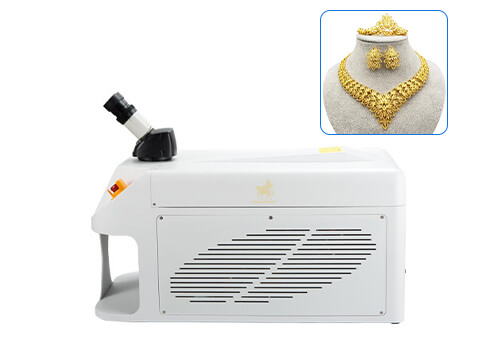
SuperbMelt Jewelry Soldering Machine is a specially designed tool for joining precious metals such as gold, silver, and platinum during jewelry production. It uses precise heat application to bond metal components without compromising their structural integrity or aesthetic quality.
This machine is essential for creating and repairing intricate jewelry pieces like rings, necklaces, and bracelets. Utilizing a focused beam (laser) to heat surfaces and melt solder, it offers greater precision and minimizes material loss compared to traditional methods, effectively solving common challenges in jewelry repair and production.
SuperbMelt provides professional jewelry soldering machines tailored to the diverse needs of jewelry manufacturers, significantly enhancing the quality and efficiency of soldering processes.
If you’re seeking a high-quality jewelry soldering machine, SuperbMelt offers advanced, customized solutions designed to meet the specific requirements of jewelers.
- Fine Welding Capability: Jewelry welding machines can perform very delicate and complex welding tasks, including customization and repair of jewelry. Given the precision of these machines, they can be used to create and repair a variety of jewelry, including rings, necklaces, earrings, and bracelets.
- High-Quality Welding: Thanks to the use of high-frequency pulses and argon gas, you can often achieve clean, smooth, and colorless welds. This is particularly important for maintaining and improving the aesthetics and structural integrity of jewelry.
- Pollution-Free: Most jewelry welding machines use inert gases (such as argon) as a shielding gas, which not only prevents metal oxidation, but also eliminates the concern about environmental pollution.
- Low Noise, Easy to Use: Compared to traditional mechanical welding equipment, the operation noise of jewelry welding machines is relatively low. In addition, they are user-friendly and easy to learn and use.
- Efficient and Energy-Saving: Due to their high-frequency pulse heating and instant heating characteristics, these machines can complete welding tasks in a short period of time. Coupled with their smaller power consumption, they can be considered relatively efficient and energy-saving.
| Model | SPB-150WB |
| Wavelength | 1064nm |
| Max output power | 150W |
| Max pulse energy | 80J |
| Pump source | Single lamp |
| Pulse width | 0.1-20ms |
| Pulse frequency | ≤50Hz |
| Aiming and positioning | Microscope + camera system |
| Application | Welding and repairing various precious metal trinkets |
| Host power consumption | ≤5KW |
| Electricity demand | AC220V±5%/50Hz |
| Cooling system | Water cooling + air cooling |
| Dimension | 660x385x435mm |
| Weight | 49kg |
1. Jewelry Manufacturing
- Used for producing high-end jewelry such as rings, bracelets, necklaces, and earrings.
- Enables precise welding between precious metals like gold, silver, and platinum, ensuring strength and aesthetics.
- Provides efficient solutions for custom jewelry designs, such as soldering intricate engravings and inlaid designs.
2. Jewelry Repair and Restoration
- Repairs broken chains, rings, or earrings, extending the lifespan of jewelry.
- Restores antique or valuable jewelry, preserving their historical and artistic value.
3. Luxury Goods Manufacturing
- Applied in the production of high-end accessories and luxury items made from precious metals, such as watches or designer belt buckles.
- Suitable for complex processes that require high-precision welding to maintain flawless details.
4. Medical Device Manufacturing
- Welds precious metal components used in precision medical tools, such as dental restoration materials or microsurgical instruments.
5. Arts and Craftsmanship
- Supports the soldering and assembly of intricate designs in art pieces and handcrafted items.
- Applied in creating sculptures and decorative crafts made from precious metals.
6. Educational and Training Institutions
- Used in jewelry design schools or welding technology training for practical lessons and skill enhancement.
7. Research and Development Laboratories
- Utilized in experimental scenarios for researching new welding technologies or metal bonding processes.
Why SuperbMelt Jewelry Soldering Machine



Any Question About SuperbMelt Jewelry Soldering Machine
Jewelry Soldering Machine Future Trend
Jewelry Soldering Machine vs. Jewelry Laser Welding Machine
Jewelry soldering machines and laser welding machines serve different needs in jewelry production. Soldering machines use heat to melt solder for joining metal parts and are cost-effective, easy to use, and ideal for beginners and small workshops. In contrast, laser welding machines offer high-precision, no-contact welding with minimal heat impact, making them perfect for fine jewelry repair, gemstone settings, and custom design work. While laser welders are more expensive and require training, they provide cleaner, more efficient results—ideal for professional jewelers seeking top-tier quality and productivity.
1.1, Comparison of the two heating methods (solder vs. laser melting)
1. Heat Source & Application
Soldering: Involves applying external heat (usually via a flame or heated tip) to melt a filler metal (solder), which bonds two components. The heat is applied over a broader area, which may affect surrounding materials.
Laser Melting: Uses a concentrated laser beam to locally melt the base metals themselves without requiring solder. This highly focused heat minimizes thermal impact on adjacent areas.
2. Precision & Control
Soldering: Offers moderate control but can be less precise due to heat spread. Fine work may risk damage to delicate parts or stones nearby.
Laser Melting: Delivers pinpoint accuracy, making it ideal for micro-welding tasks like reattaching prongs or repairing chain links without affecting nearby settings.
3. Material Compatibility
Soldering: Can join dissimilar metals but may leave visible seams or discoloration, depending on the solder alloy used.
Laser Melting: Ideal for welding both similar and dissimilar precious metals (gold, platinum, silver) with seamless, strong joints and minimal discoloration.
4. Aesthetic and Structural Integrity
Soldering: May lead to slight material loss or less seamless finishes. Some cleaning or polishing is typically needed afterward.
Laser Melting: Offers clean, durable results with minimal need for post-processing, maintaining the original appearance and strength of the piece.
5. Use Cases
Soldering: Best for general assembly, simple repairs, and joining larger components.
Laser Melting: Preferred for high-precision repairs, custom jewelry creation, and tasks requiring minimal distortion—such as near gemstones or on thin components.
1.2, Differences in cost, applicable metals, precision and heat affected range
1. Cost
Jewelry Soldering Machine:
Lower initial investment, suitable for small studios and traditional craftsmen.Jewelry Laser Welding Machine:
Higher upfront cost due to advanced technology, but long-term benefits in efficiency and precision often justify the price for professional or high-volume use.
2. Applicable Metals
Soldering Machine:
Works with most precious and non-precious metals, but may require specific solders for different metal types.Laser Welding Machine:
Can directly weld gold, silver, platinum, titanium, stainless steel, and other alloys—compatible with both identical and dissimilar metals.
3. Precision
Soldering:
Moderate precision; suitable for general joins but less ideal for micro components or work near stones.Laser Welding:
Extremely high precision; perfect for delicate repairs, fine settings, and intricate custom designs.
4. Heat-Affected Zone (HAZ)
Soldering:
Larger HAZ; higher risk of heat damage or distortion to nearby parts, especially for thin or detailed pieces.Laser Welding:
Very small HAZ due to focused beam; preserves surrounding material and structure, ideal for sensitive or detailed work.
1.3, Which processes are suitable for welding? Which are suitable for laser welding?
Processes Suitable for Traditional Jewelry Soldering:
General Assembly of Jewelry Parts
Ideal for joining larger surfaces like necklace chains, bracelet links, or ring bands.
Joining Similar Metals with Solder
Gold to gold, silver to silver, etc., using appropriate solder material.
Lower-Precision Repairs
Fixes that don’t require extreme detail or are not close to heat-sensitive stones.
Bulk or Batch Repairs
Cost-effective for simpler, repetitive tasks.
Classic Designs or Techniques
Preferred by traditional craftsmen for vintage or handmade styles.
Processes Suitable for Jewelry Laser Welding:
Micro-Welding of Fine Parts
Spot welding on prongs, clasps, bezels, and intricate filigree work.
Repairing Near Gemstones
Safe to weld near heat-sensitive stones (e.g., opal, emerald) without removing them.
Welding Dissimilar Metals
For example, welding gold to platinum, or gold to stainless steel.
Seamless, Precision-Based Joining
No need for solder or flux—laser melts and fuses base materials directly.
Custom Jewelry Production
Perfect for one-off, detailed, or high-end bespoke pieces.
Welding Inside Hollow or Tight Areas
Enables access to areas traditional torches cannot reach.
Manual vs. Automatic Jewelry Welding Machine
Manual jewelry welding machines are ideal for small studios or skilled artisans who need flexibility and hands-on control, offering lower costs but requiring more experience. In contrast, automatic machines are better suited for high-volume production, delivering consistent, precise results with faster speed and less operator skill required—though they come at a higher upfront investment. Choosing between them depends on your production scale, budget, and precision needs.
2.1, Automation level, efficiency improvement, and differences in manual operation
Automatic jewelry welding machines offer a higher level of automation compared to manual models, significantly improving efficiency by reducing human error and allowing continuous operation. They can complete complex welding tasks with consistent precision, making them ideal for batch production and custom high-end jewelry. Manual machines, while more affordable and flexible, rely heavily on the operator’s skill and are better suited for low-volume, delicate, or artistic work. The key difference lies in labor intensity—manual machines require hands-on control, while automatic ones streamline the process for faster, more uniform results.
2.2, Is it suitable for mass production or customized business?
Automatic jewelry welding machines are well-suited for both mass production and customized jewelry businesses, but the fit depends on the production focus:
- Mass Production: Automatic machines excel in high-volume workflows due to their speed, precision, and ability to operate continuously with minimal manual intervention. This ensures consistent quality across large batches, making them ideal for factory-scale manufacturing.
- Customized Jewelry Businesses: For custom jewelers, automatic welders offer the advantage of precision and repeatability, especially for intricate settings and repeat orders. They reduce the time needed for each piece while maintaining fine detail, helping artisans scale up without sacrificing craftsmanship.
In summary, whether you’re producing hundreds of identical pieces or high-end bespoke designs, automatic machines provide the flexibility and efficiency needed for both models.
Emerging technologies: intelligent temperature control, CCD assisted positioning, foot-operated sensing control, etc.
Modern jewelry welding machines now feature advanced technologies like intelligent temperature control, CCD-assisted positioning, and foot-operated sensing. These innovations ensure precise welding, better safety, and hands-free operation—greatly improving efficiency and accuracy for both small studios and high-volume production.
3.1, Introduction to common cutting-edge configurations in high-end welding machines
High-end jewelry welding machines are equipped with cutting-edge configurations that significantly enhance performance and usability. These typically include:
Intelligent Temperature Control – Automatically adjusts the welding temperature based on the material and task, ensuring consistent results and reducing the risk of overheating or damage.
CCD-Assisted Positioning System – Integrated cameras provide real-time visual guidance, allowing users to accurately align even the smallest weld points. This is especially valuable for delicate gemstone settings and micro-welding applications.
Foot-Operated Sensing Control – Enables hands-free operation, giving jewelers greater control and flexibility during the welding process. This minimizes user fatigue and improves operational efficiency.
Touchscreen Interface with Memory Presets – Allows users to store frequently used parameters and switch between them quickly, streamlining workflows for repetitive tasks.
Dual-Circuit Cooling Systems – Ensures stable performance during extended use by maintaining optimal operating temperature, supporting continuous 24/7 operation.
These features are essential for professional jewelers and manufacturers seeking high precision, increased productivity, and a seamless user experience in both custom and mass production environments.
3.2, How to improve welding accuracy and stability
1. Use of High-Precision Equipment
Laser welding machines with fine beam control (as small as 0.1–0.3 mm) ensure tight focus on small weld areas.
Opt for machines with stable power output (e.g., ±2% fluctuation range) to maintain uniform heat delivery.
2. Intelligent Temperature Control
Smart systems adjust laser pulse duration, energy, and frequency based on material type and thickness.
Avoids overheating and ensures proper fusion depth, especially important when working with metals like gold, silver, titanium, or platinum.
3. CCD Visual Alignment System
A camera-assisted positioning system helps align the workpiece with extreme accuracy.
Ideal for gemstone settings, micro-connectors, and detailed components—allowing visual confirmation before every weld.
4. Workpiece Stability and Fixtures
Use anti-vibration worktables or custom jigs and clamps to hold pieces in place during welding.
Reduces movement errors and improves consistency over long production cycles.
5. Environmental Control
Maintain a clean, static-free work environment with temperature and humidity stability to avoid thermal drift or contamination.
Use argon shielding gas if required to prevent oxidation in sensitive metals.
6. Skilled Operation and Training
Ensure operators are trained in pulse settings, focus distance calibration, and material response.
Understanding how different alloys react to heat can drastically improve outcome quality.
7. Regular Maintenance
Clean optical lenses and nozzles regularly to prevent beam distortion.
Check and calibrate cooling systems, power modules, and motion parts to maintain machine precision.
FAQ Guide of Jewelry Soldering Machine
- 1. What do jewelers use to solder jewelry?
- 2. Do you pickle gold after soldering?
- 3.What temperature does jewelry solder melt?
- 4. What welding technology does it use?
- 5. Does the welding machine provide a permanent welding effect?
- 6. Is it suitable for various jewelry designs and shapes?
- 7. What are the maintenance requirements for this machine?
- 8. Does it come with after-sales service and training?
- 9. Is the welding machine safe to use?
- 10. What advantages does it have compared to other welding machines in the market?
- 11. Can the Jewelry Soldering Machine handle delicate and intricate jewelry designs?
- 12. What kind of warranty does SuperbMelt offer for this welding machine?
- 13. Is the welding machine suitable for both continuous and spot welding?
- 14. Can it be used for automated production processes?
- 15. Does the machine have compatibility with different soldering materials?
- 16. How does laser welding compare to traditional soldering methods in terms of efficiency?
- 17. Can the Jewelry Soldering Machine be used for both creating new jewelry and repairing existing pieces?
- 18. What type of filler materials are compatible with this welding machine?
- 19. Can the machine handle various thicknesses of metal for welding?
- 20. What makes SuperbMelt a reliable choice for jewelry soldering machines?
1. What do jewelers use to solder jewelry?
Jewelers use jewelry soldering tools and materials specifically designed to join metals. Here are the main components and tools commonly used for soldering jewelry:
1. Soldering Materials
- Solder: A metal alloy (gold, silver, or other alloys) with a lower melting point than the metals being joined.
- Hard solder: High melting point, provides strong bonds.
- Medium solder: Intermediate melting point, used for multiple soldering steps.
- Easy solder: Low melting point, often for repairs.
2. Heat Sources
- Torch: A jeweler’s torch (e.g., butane, propane, or oxy-acetylene) is widely used to heat the solder and the metal.
- Jewelry Soldering Machine: A modern tool, often a laser or pulse welder, for precise and clean soldering.
3. Flux
- A chemical applied to the joint area to prevent oxidation during heating and to ensure the solder flows smoothly.
4. Pickle Solution
- An acidic solution used to clean metal after soldering, removing oxidation and flux residues.
5. Tools and Accessories
- Soldering Block or Pad: A heat-resistant surface for soldering work.
- Third Hand Tool: A clamp or holder to stabilize pieces during soldering.
- Tweezers or Solder Pick: For positioning solder pieces or flux application.
- Safety Equipment: Includes goggles, gloves, and proper ventilation to ensure safe working conditions.
Advanced Options
- Laser Soldering Machine: Provides precision and is ideal for delicate or high-value pieces, such as intricate gold or silver jewelry.
Jewelry soldering combines craftsmanship and the right tools to achieve durable, aesthetically pleasing joints in jewelry-making and repair.
2. Do you pickle gold after soldering?
Yes, gold is typically pickled after soldering to clean and restore its appearance. Pickling involves immersing the gold piece in a mild acid solution, which removes oxidation, flux residue, and discoloration caused by heating during the soldering process. Here’s what you should know about pickling gold:
Why Pickle Gold After Soldering?
- Remove Oxidation: Soldering generates heat that causes the surface of the gold to oxidize, forming a dark or tarnished layer.
- Eliminate Flux Residue: Flux used during soldering can leave residues that need to be cleaned off.
- Restore Shine: Pickling restores the original color and luster of the gold piece.
Common Pickling Solutions
- Commercial Pickle Solution: Formulated for jewelry work, often based on sodium bisulfate.
- Homemade Pickle: A mixture of white vinegar and table salt can serve as a gentler alternative.
- Safety Pickle: Safer, non-toxic options are available for those sensitive to chemicals.
Steps to Pickle Gold After Soldering
- Prepare the Pickle Solution: Heat the solution in a heat-safe container (do not boil).
- Immerse the Gold: Place the gold item into the solution using non-metallic tweezers.
- Wait: Allow the piece to soak until the oxidation and residue are removed (a few minutes to several minutes).
- Rinse: Rinse the piece thoroughly in clean water to remove any acid traces.
- Neutralize (Optional): Soak the piece in a baking soda solution to neutralize any remaining acid.
Tips for Pickling Gold
- Use a dedicated container for pickling, as the acid can corrode some materials.
- Avoid using steel tools in the solution, as they can contaminate the pickle and cause unwanted reactions.
- Be cautious with gold alloys, as some components (e.g., copper) may react differently.
Pickling is a standard step in jewelry-making to ensure a clean and polished finish after soldering.
3.What temperature does jewelry solder melt?
The melting temperature of jewelry solder depends on the type of solder used, which varies by material and application. Here are the common types of jewelry solder and their approximate melting temperatures:
1. Hard Solder
- Melting Temperature: ~740°C to 870°C (1364°F to 1598°F)
- Uses: Ideal for the first soldering joints in a piece with multiple soldering steps. It requires higher temperatures, which prevents earlier joints from melting during subsequent work.
2. Medium Solder
- Melting Temperature: ~650°C to 760°C (1202°F to 1400°F)
- Uses: Used in intermediate soldering steps, as it melts at a slightly lower temperature than hard solder.
3. Easy Solder
- Melting Temperature: ~620°C to 710°C (1148°F to 1310°F)
- Uses: Preferred for final soldering steps or delicate work to avoid overheating the piece.
4. Extra-Easy Solder
- Melting Temperature: ~580°C to 620°C (1076°F to 1148°F)
- Uses: Often used for repairs or in situations where minimal heat is desired to avoid damaging stones or other components.
Factors Influencing Melting Temperature
- Metal Type: Solders are matched to the metals being joined (gold, silver, platinum, etc.).
- Alloy Composition: Solder is typically an alloy of the base metal (e.g., gold, silver) and other metals to lower the melting point.
Tools for Soldering Jewelry
- Soldering Torch: Supplies the required heat for melting the solder.
- Temperature Control: Precision tools like temperature-controlled torches or laser welders help maintain appropriate heat levels.
Tips for Successful Soldering
- Always select solder appropriate for the base metal to ensure a strong bond.
- Use flux to prevent oxidation and facilitate the flow of solder.
- Ensure proper heating and positioning to avoid overheating or damaging the piece.
Understanding the melting points of different solders is crucial for effective and precise jewelry-making!
4. What welding technology does it use?
The machine uses laser welding technology, achieving high-precision welding through a concentrated laser beam.
5. Does the welding machine provide a permanent welding effect?
Yes, SuperbMelt’s welding machine offers a permanent welding effect, ensuring the durability of the weld.
6. Is it suitable for various jewelry designs and shapes?
Yes, the machine is suitable for a variety of jewelry designs and shapes, providing more flexibility in applications.
7. What are the maintenance requirements for this machine?
SuperbMelt welding machine is easy to maintain, and specific requirements can be found in the user manual.
8. Does it come with after-sales service and training?
Yes, SuperbMelt provides after-sales service and training to ensure users correctly use and maintain the equipment.
9. Is the welding machine safe to use?
Yes, the machine has safety features to ensure safety during operation.
10. What advantages does it have compared to other welding machines in the market?
SuperbMelt welding machine has more advantages in terms of precision, control, and permanent welding compared to traditional welding methods.
11. Can the Jewelry Soldering Machine handle delicate and intricate jewelry designs?
Yes, the machine is designed to handle delicate and intricate jewelry designs with precision.
12. What kind of warranty does SuperbMelt offer for this welding machine?
SuperbMelt provides a warranty for the Jewelry Soldering Machine, and the details can be found in the product documentation.
13. Is the welding machine suitable for both continuous and spot welding?
Yes, the machine is versatile and can be used for both continuous and spot welding applications.
14. Can it be used for automated production processes?
The Jewelry Soldering Machine can be integrated into automated production processes for efficient and consistent results.
15. Does the machine have compatibility with different soldering materials?
Yes, the machine is compatible with various soldering materials used in jewelry making.
16. How does laser welding compare to traditional soldering methods in terms of efficiency?
Laser welding, used in this machine, is more efficient compared to traditional soldering methods, providing faster and more precise results.
17.Can the Jewelry Soldering Machine be used for both creating new jewelry and repairing existing pieces?
Yes, the machine is versatile and can be used for both creating new jewelry and repairing existing pieces.
18. What type of filler materials are compatible with this welding machine?
The Jewelry Soldering Machine is compatible with standard soldering filler materials used in jewelry making.
19. Can the machine handle various thicknesses of metal for welding?
Yes, the machine is designed to handle various thicknesses of metal for welding applications.
20. What makes SuperbMelt a reliable choice for jewelry soldering machines?
SuperbMelt is a reliable choice due to its commitment to quality, precision, and innovative technology, making it a trusted brand in the jewelry industry.
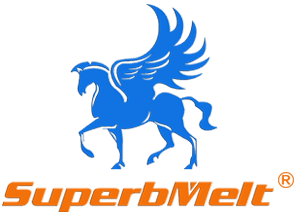
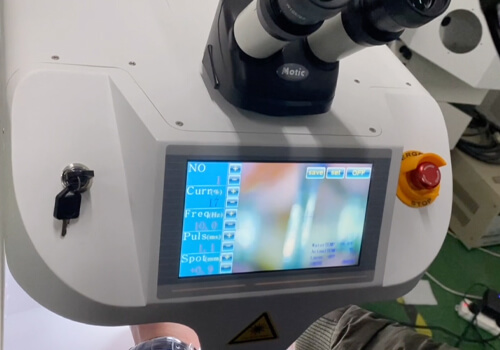

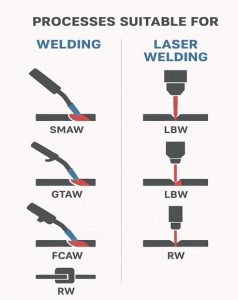
 © Copyright 2008-2021 Superb Electromachinery Co., Limited
© Copyright 2008-2021 Superb Electromachinery Co., Limited